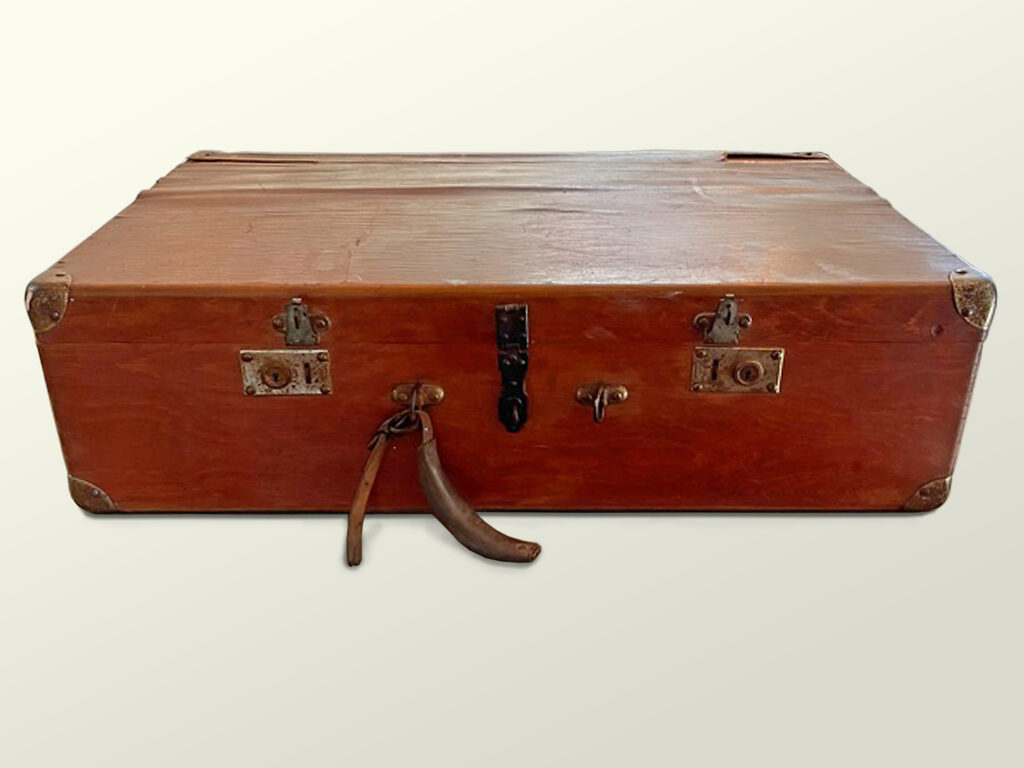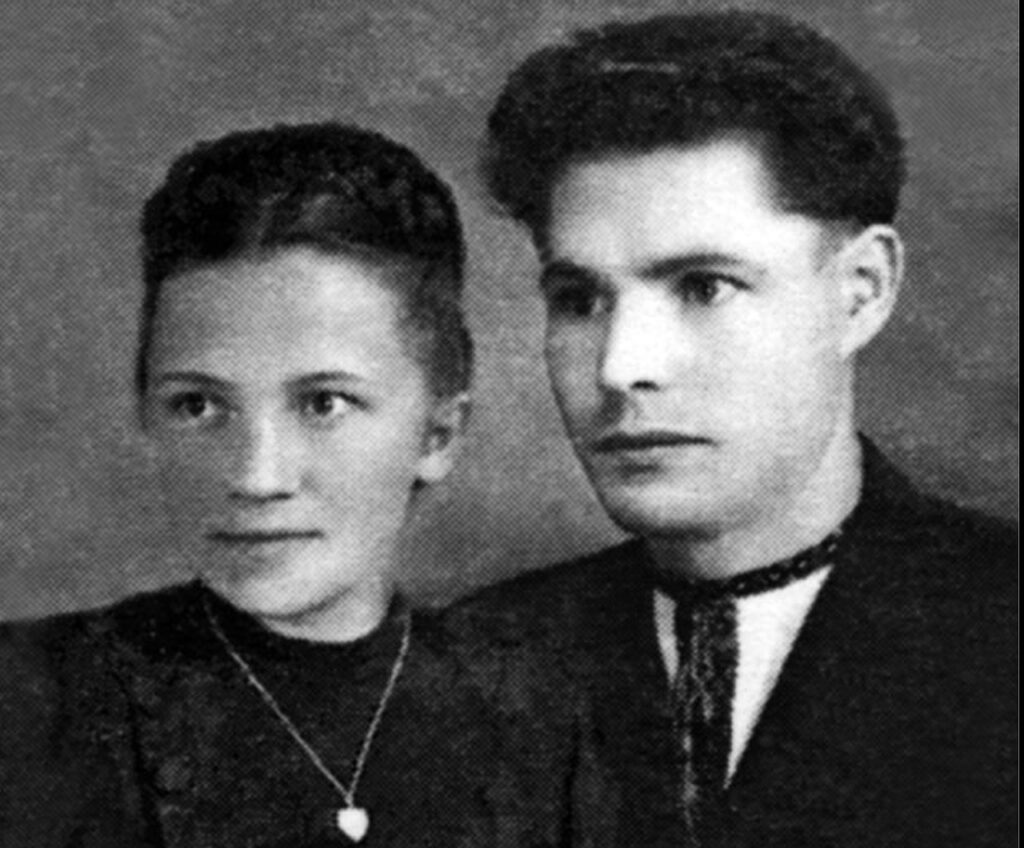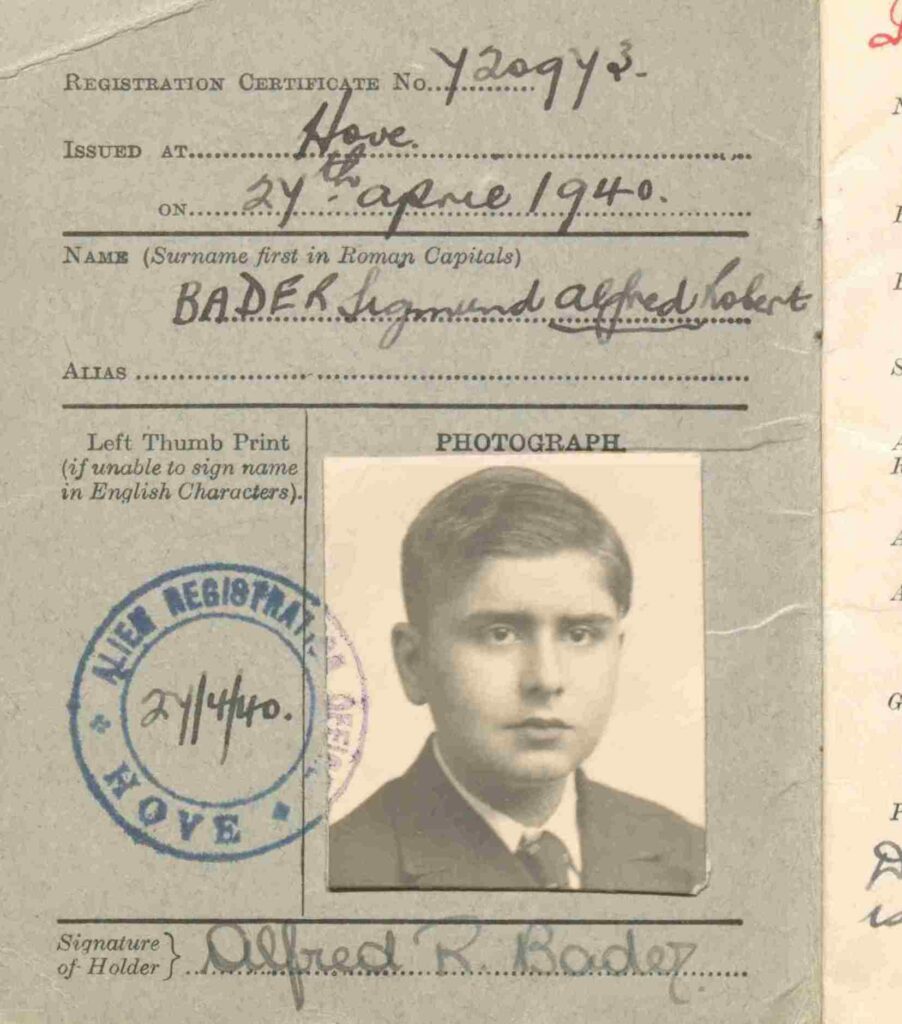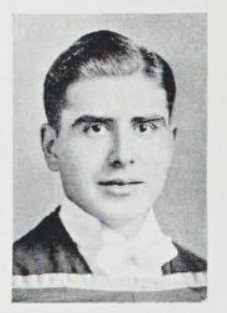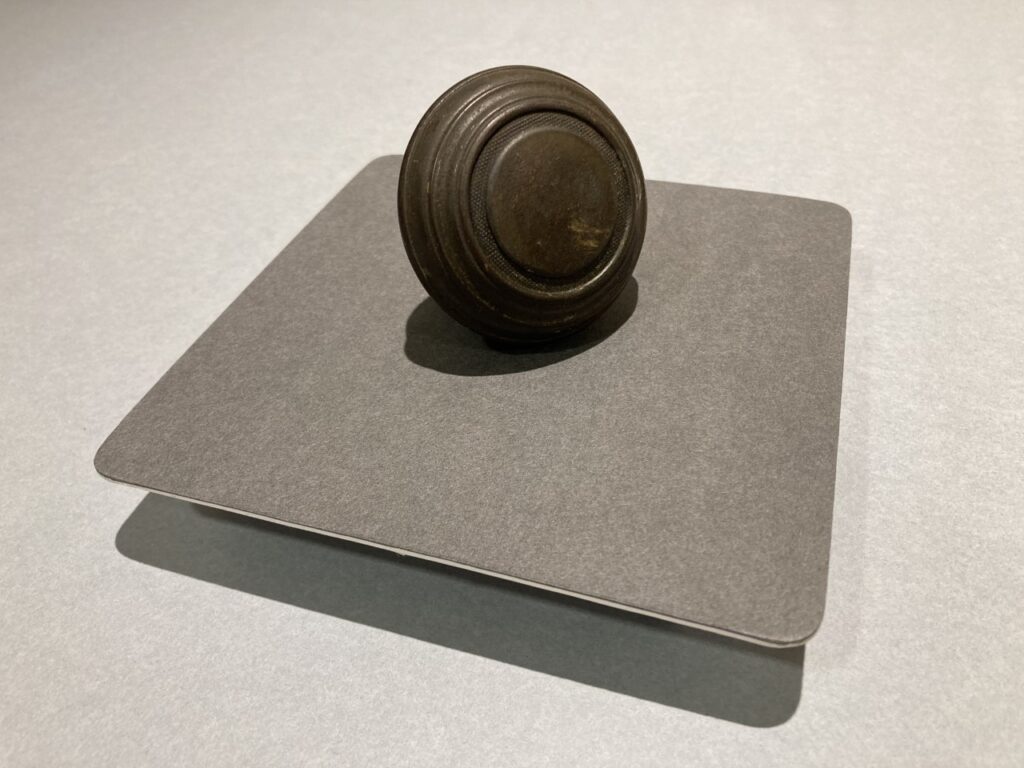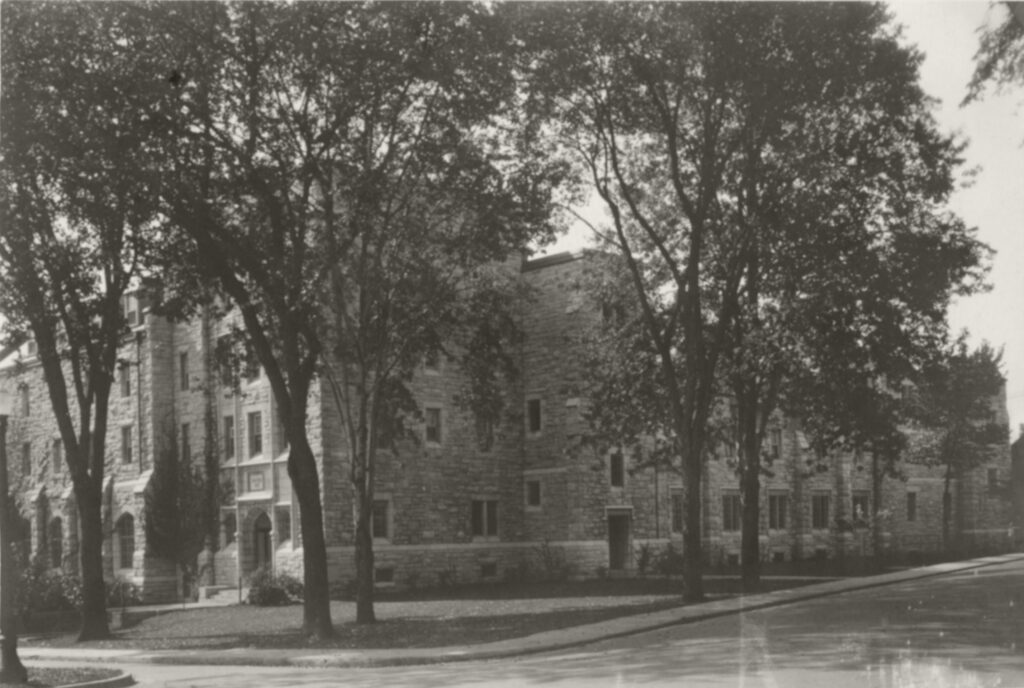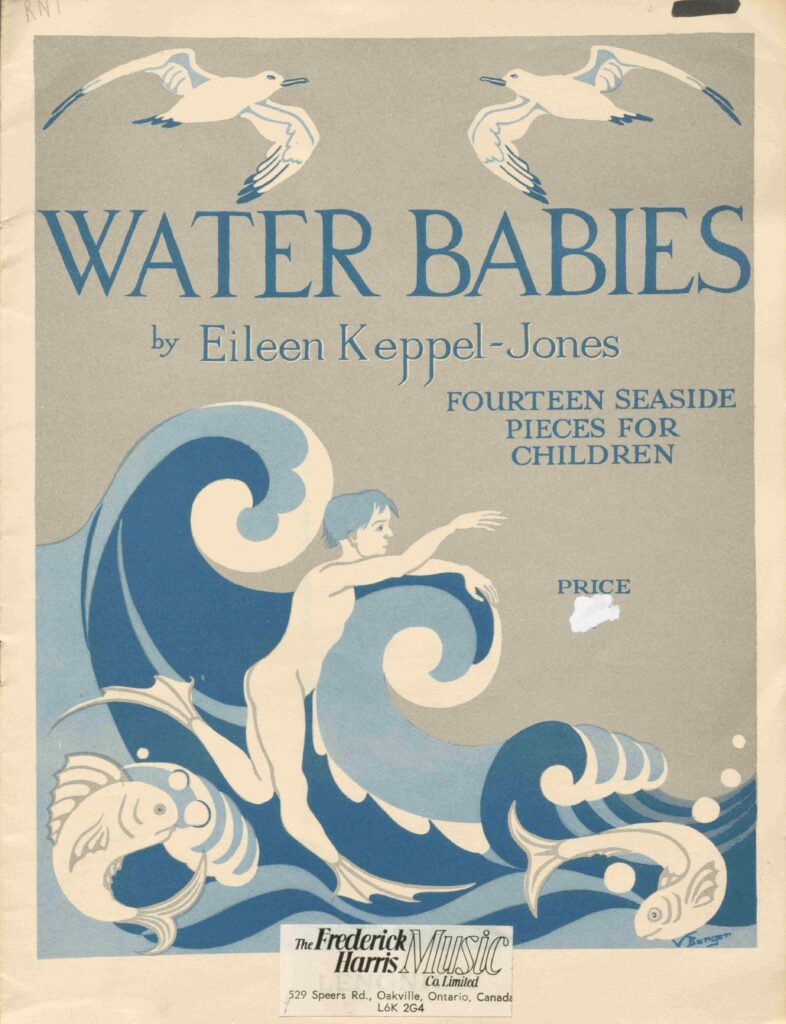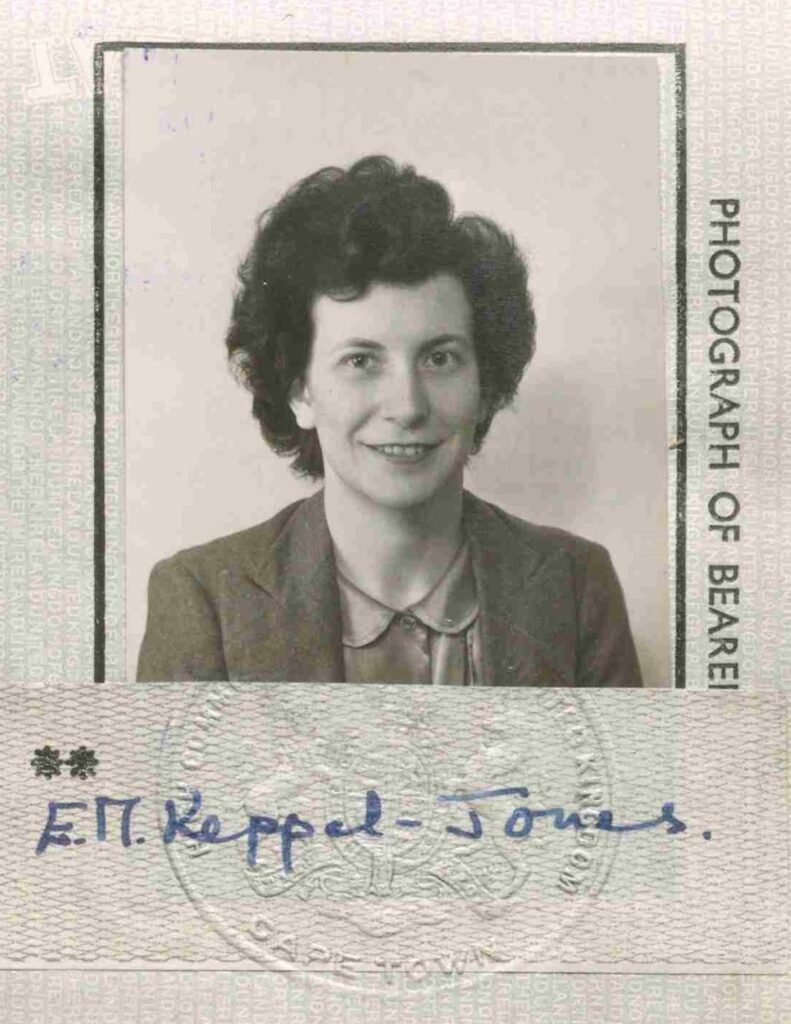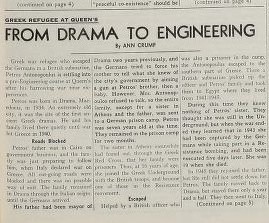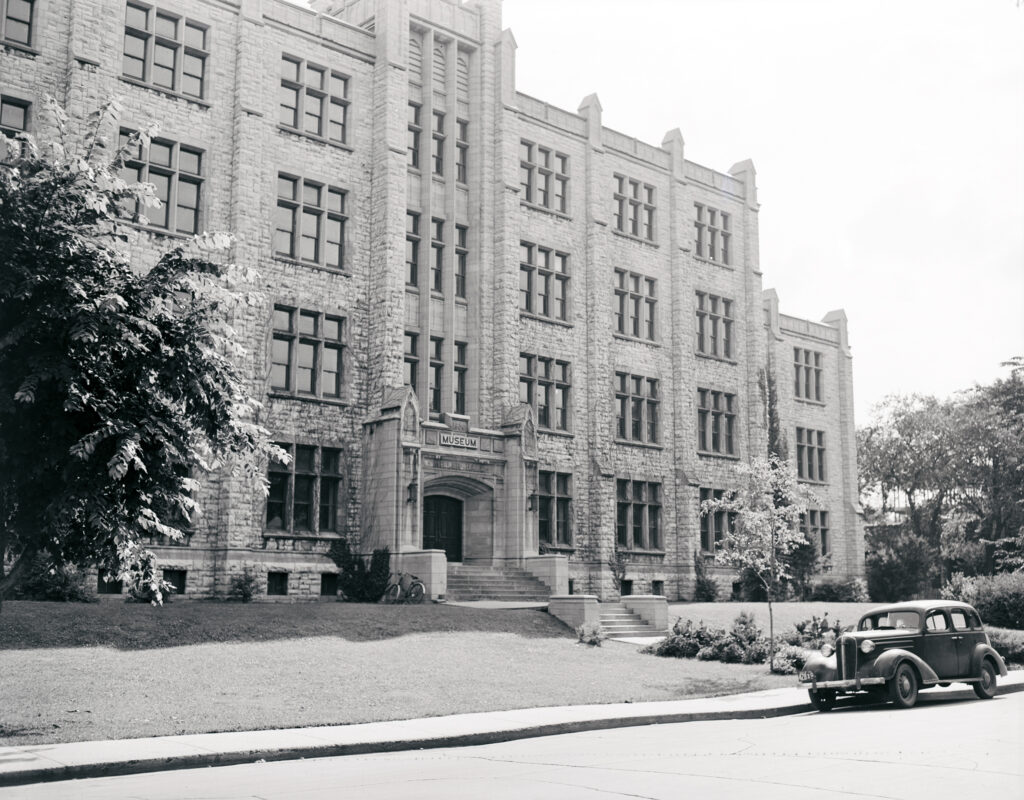(1) Directions
Picture: Maria and Danylo Luciuk, c. 1949. Private collection, Professor Lubomyr Luciuk, Kingston
Forced migration is not simply about a point of departure or the place of arrival. Most refugees suffer traumatic and repeated dislocations, challenges that degrade their social, economic, and political status, and even their physical and mental health. And, no matter how much the refugee might hope or try to make decisions about their destination, the choices available are often very limited. Advice and resettlement assistance must typically be accepted from others, be they individuals, religious communities, state agencies, or international organizations.
This luggage belonged to Maria and Danylo Luciuk, Ukrainian Displaced Persons (DPs) aided by the United Nations Relief and Rehabilitation Administration (UNRRA) and, later, the International Refugee Organization (IRO). After years of privitation and uncertainty, they left war-torn Europe in 1949 and found asylum in Kingston. Here they rebuilt their lives as Canadians. Their children both attended Queen’s University and later helped other refugees, never forgetting what their parents endured and what this battered suitcase – all that Maria and Danylo had when they came to this city – represents.
(2) Transit
Picture: Alfred Bader in Tricolor ’45 (Kingston: Alma Mater Society 1956), p. 60, Queen’s University Archives
Refugees in the past and present are often forced into a transit situation: disconnected from social or family networks from one day to the next, deprived of citizenship or even their status as a human being, without valid papers documenting basic information like birthplace or education. However, this transit situation could offer new opportunities and choices – if the receiving society, institutions, or organizations made such choices possible for refugees. This British certificate from 1940 represents such a refugee, Alfred Bader, it is a document giving him legal status.
This British certificate from 1940 represents such a refugee, Alfred Bader was sent to Britain with a Kindertransport from Vienna in 1938. But this document was not the end of his transit situation: in 1940 Bader was deported to and interned in Canada, before eventually successfully beginning studies at Queen’s where he was active in student organizations. But he left Kingston to go to the US when he had the opportunity. He nonetheless remained strongly connected to Kingston, becoming a successful businessman, art collector, and generous donor to Queen’s University. Like many other refugees, Queen’s University was a transit point for the refugee Bader.
(3) Relief
Picture: Ban Righ Hall on Queen’s campus, late 1930s, Queen’s University Archives
What is, or is not, in a refugees’ suitcase? A lack of proper clothing for new environments, for example; no food or money, and prWhat is, or is not, in a refugees’ suitcase? A lack of proper clothing for new environments, for example; no food or money, and probably not the keys to a room that could give shelter after months or even years of insecurity. Part of the story of refugees in need are the people on the other side: the people who recognize that help is necessary, the people who organize and provide help – but also the people who rejected, refused, or ignored the plight of the refugee.
Krystyna Zbierańska was among those who received help from individuals at Queen’s University: in Fall 1939, she fled the Soviet occupation of Poland to France and later to Britain after the German invasion in May 1940. With the assistance of the Refugee Committee of the Alumni Association, she arrived in Kingston in January 1941 where she was provided a room and privacy in Ban Righ Hall, represented by this door knob.
If you want to learn more about Krystyna Zbierańska, please visit the Internment – and Alternative Routes from Nazi Persecution satellite exhibition in the PumpHouse Steam Museum in Kingston that accompanies the Refuge Canada travelling exhibition from the Canadian Museum of Immigration at Pier 21.
(4) Arrival
Picture: Eileen Keppel-Jones in her passport from 1953, Keppel-Jones papers, box 43, Queen’s University Archives
Departure somehow also means arrival. This simple scheme normally does not apply to refugees, and not to many other migrants in general. On the other hand, such arrivals happened: in departments at the University and in friendships, in religious communities and organizations, within the Kingston community itself and in everyday life.
Eileen Keppel-Jones was part of this everyday life in Kingston: as a music teacher for viola and piano and as a composer, she occasionally played organ in a local church. But unlike many other refugees, she arrived in 1953 as a privileged white person from another settler-colonial setting: born in South Africa as a British citizen, she fled a changing and violent political situation with her husband, Arthur, and three children.
Arthur Keppel-Jones was already teaching at Queen’s in 1953; an advocate of racial harmony, he later became a professor. The Water Babies musical score documents the mobility of ideas often related to arrival: Eileen Keppel-Jones wrote the songs in Johannesburg and later published them in London, England. This booklet was sold through The Frederick Harris Music Co. in Oakville, reaching an audience in Ontario.
(5) What’s a Refuge?
Picture: Miller Hall, 1948, George E.O. Lilley, V25.5, Box 4, envelope 199, Queen’s University Archives
Refugees and receiving societies often answer this question differently. Depending on the circumstances of flight, legal status, public opinion, or the necessity of staying alive, notions of what’s a refuge differ from retrospective reflections, for example, in the autobiographies of refugees. The Greek refugee Petros Antonopoulus is no exception: born in 1934 in modern-day Macedonia, he was imprisoned by the German army and managed to escape to Egypt with his family in 1941. After 1945, their journey continued via Italy, France, and Turkey.
In 1952, former refugee Antonopoulus entered Canada to study in Montreal. In 1953 he arrived at Queen’s to study mining engineering at Miller Hall. This Queen’s Journal article not only described his story, it also gave him a voice in mentioning that he was at first “very disappointed” by the “welcome” given to him in Canada. But his arrival in Kingston made a difference: “I was here only five days, and already there were ten people I could say hello to!” Sources like this are rare; refugees often remain silent and unheard in receiving societies.
And like in many other cases, we do not know much about the further career of Petros Antonopoulus. On the other hand, the Queen’s Journal article raises questions about what he was not saying about the situation of arrival. You can explore the full document – like all other sources – on the website of this exhibition.
